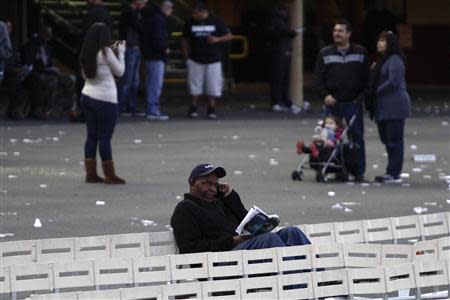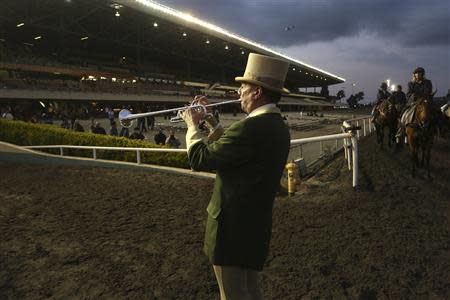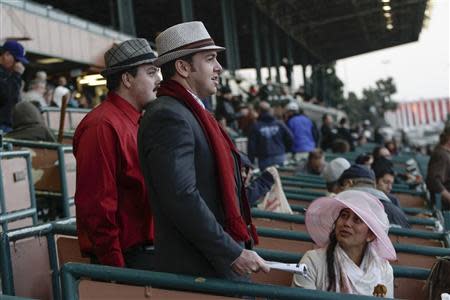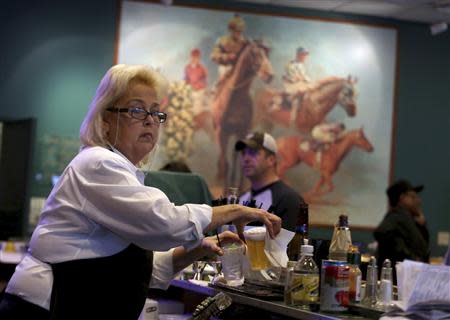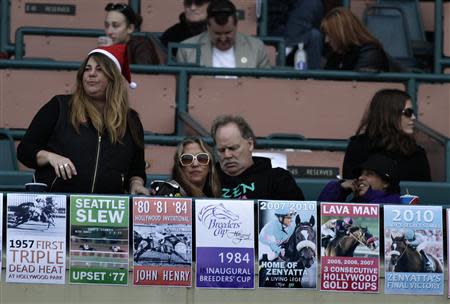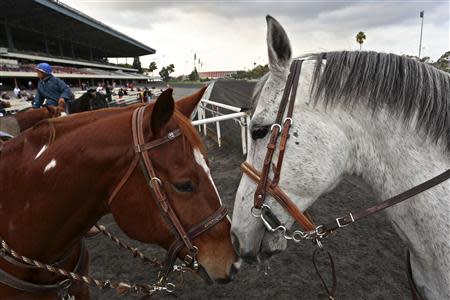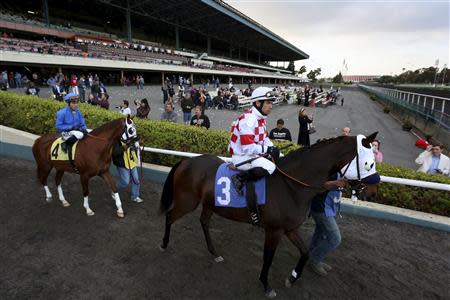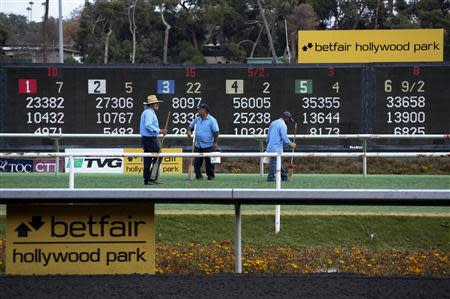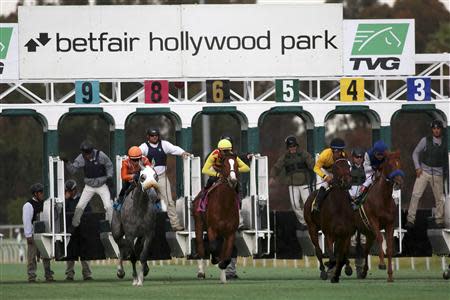Hollywood Park horse racing track enters final stretch
By Brandon Lowrey INGLEWOOD, California (Reuters) - Hollywood Park is giving horse racing fans a run for their money one last time this weekend, as the 75-year-old track near Los Angeles that was once the playground of movie industry elites closes down amid declining U.S. popularity for the sport. The Inglewood track, which is known for its pink flamingos in the infield lake and frequent flyovers by jumbo jets descending on Los Angeles International Airport, is set to close on Sunday after a long and steady decline in attendance. The end of the line for the track, which is officially called Betfair Hollywood Park, underscores the challenges facing the horse racing industry, which has seen its popularity erode as casinos and online gambling have proliferated. At Hollywood Park on Saturday, as the bugle sounded to announce each new lineup of thoroughbreds taking the track, groups of mostly gray-haired men placed bets indoors between glances at television monitors. Outside in the sun, people filled only a few of the trackside seats in an area where crowds once roared. Roy Morris, 65, watched the races from a shaded spot, away from the sparse crowd. "I would say it's at its worst right now," said Morris, who has been a regular at the track since he moved to Los Angeles in 1981. "Back in the day, you couldn't even stand out here." Hollywood Park opened on June 10, 1938, with Jack L. Warner, the co-founder of film studio Warner Bros. as the park's chairman and Hollywood power figures Walt Disney, Bing Crosby and Sam Goldwyn among its founding shareholders. A number of Jews with success in Hollywood who were involved in creating the park were motivated by the cold shoulder they had received at Santa Anita, the Los Angeles-area's premier track, according to author Neal Gabler's book "An Empire of Their Own," a history of the Hollywood film industry. The storied horse, Seabiscuit, claimed the Hollywood Gold Cup the year Hollywood Park opened. LOSING TO CASINOS In the park's glory days, celebrities such as Lucille Ball, Elizabeth Taylor and Michael Jackson graced its seats. Attendance reached an all-time high of 80,348 people during a tote bag giveaway event on May 4, 1980. In contrast, during the fall meet this year, the track saw only about 3,000 visitors a day, said Hollywood Park spokesman Bob Mieszerski. The largest crowd in recent memory was in 2010, when celebrated racehorse Zenyatta drew nearly 26,000 visitors. Hollywood Park has not been alone among U.S. race tracks in seeing its fortunes fade. With attendance declining, less races are being held than in years past, said James Mulvihill, spokesman for the National Thoroughbred Racing Association. There were 45,000 races at U.S. racetracks in 2012 compared to nearly double that number in 1989, according to the Jockey Club Fact Book, which records racing statistics. "Racing faces a lot of challenges from casinos and other forms of gambling that didn't exist when Hollywood Park was at its heyday, and racing had a monopoly on legalized gambling," Mulvihill said. "It wasn't that long ago that Atlantic City and Las Vegas were the only two places you could legally bet away from the race track." As Hollywood Park has lost its luster, the Santa Anita Park track in Arcadia, some 20 miles to the northeast, has four times in the last decade hosted the prestigious Breeders' Cup. The event was last held at Hollywood Park in 1997. Richard Warren, an usher who has worked at Hollywood Park since 1947, lamented the end of the track. On Sunday, he said, the crowds that had forsaken the park will finally return. "They'll be here with their cameras and their screwdrivers, looking for souvenirs," he said. The city of Inglewood has approved a plan to demolish Hollywood Park, and on the 238-acre (96-hectare) site build nearly 3,000 homes along with retail outlets, offices, and a park. The casino that exists next to the track will be renovated and will remain. (Additional reporting by Elizabeth Dilts in New York, Editing by Alex Dobuzinskis and Sandra Maler)
